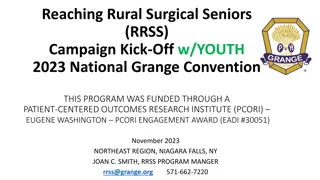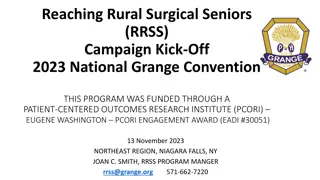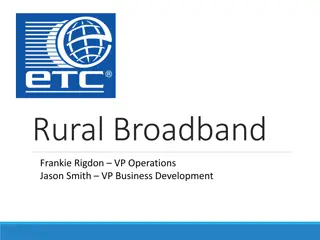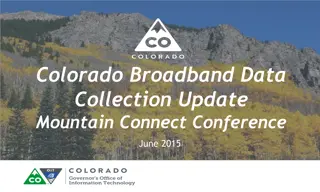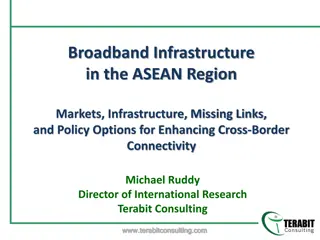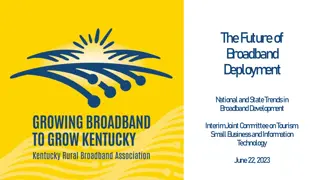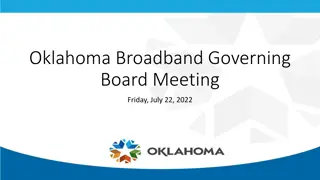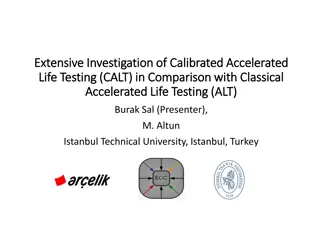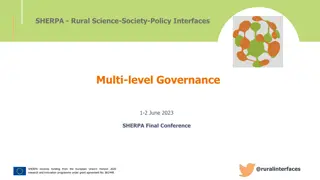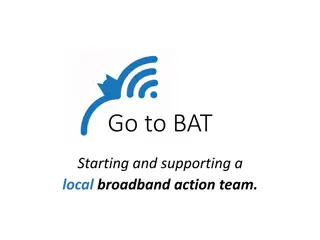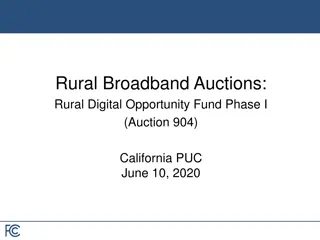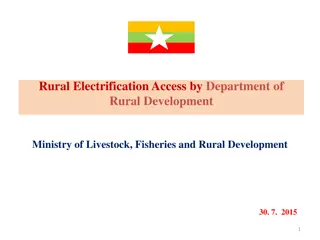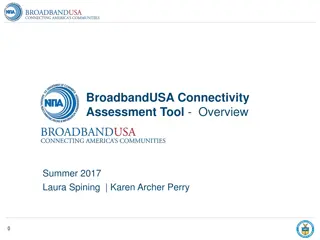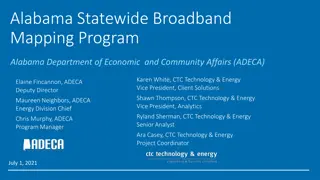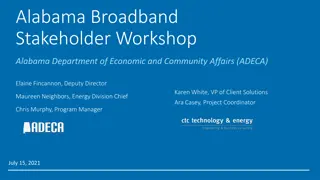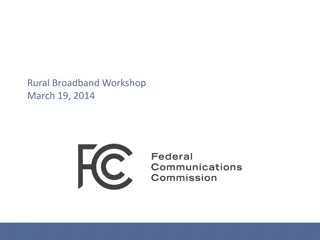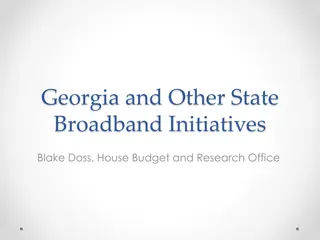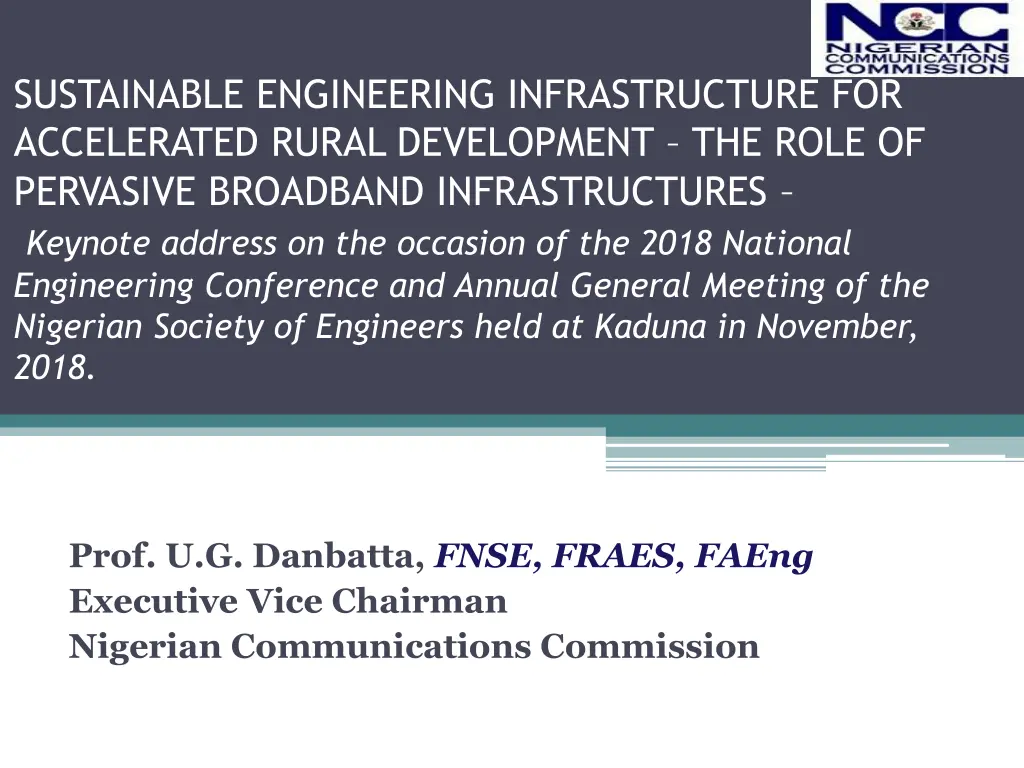
Pervasive Broadband Infrastructure for Rural Development in Nigeria
Explore the pivotal role of pervasive broadband infrastructure in accelerating rural development in Nigeria, as discussed in a keynote address at the 2018 National Engineering Conference. Delve into the definition of broadband, its benefits for economic growth and competitiveness, and the Nigerian telecommunications industry landscape.
Download Presentation

Please find below an Image/Link to download the presentation.
The content on the website is provided AS IS for your information and personal use only. It may not be sold, licensed, or shared on other websites without obtaining consent from the author. If you encounter any issues during the download, it is possible that the publisher has removed the file from their server.
You are allowed to download the files provided on this website for personal or commercial use, subject to the condition that they are used lawfully. All files are the property of their respective owners.
The content on the website is provided AS IS for your information and personal use only. It may not be sold, licensed, or shared on other websites without obtaining consent from the author.
E N D
Presentation Transcript
SUSTAINABLE ENGINEERING INFRASTRUCTURE FOR ACCELERATED RURAL DEVELOPMENT THE ROLE OF PERVASIVE BROADBAND INFRASTRUCTURES Keynote address on the occasion of the 2018 National Engineering Conference and Annual General Meeting of the Nigerian Society of Engineers held at Kaduna in November, 2018. Prof. U.G. Danbatta, FNSE, FRAES, FAEng Executive Vice Chairman Nigerian Communications Commission
Outline 1 What is Broadband 2 Industry Context Nigerian Broadband Initiative 3 Conclusion 4 2
What is Broadband? Broadband within the Nigerian context is defined as an internet experience where the user can access the most demanding content in real time at a minimum speed of 1.5 Mbps. It is categorized into Fixed(Wired) Broadband and Wireless Broadband. Wireless is using Spectrum Resources, while Fixed is largely delivered by Optical Fiber. We will be focusing on Fixed Broadband
What can Broadband do Broadband Benefit for a Smart Nation Economy Development GDP growth 10% increase in BB penetration-> 1.3% increase in economic growth Employment More Jobs: 10% increase in Broadband penetration -> 2-3% employment increase National Competitiveness Productivity Bridging Digital Divide Enhancing Productivity 10% increase in BB penetration->5-10% Productivity increase Enterprise Enterprise Development Empowered enterprises with fairly good access to the Smart world Public Service Smart-Education & Smart-Health Data Source: ITU/world bank
Broadband Industry Ecosystem Government Policy & Programmes Regulatory Frameworks and environment Supply Side Demand Side
Brief Nigerian Telecommunications Industry Overview 1. Increasing use of data enabled devices (Smartphones, dongles, MiFis etc). Voice service more wide spread than data. Internet and VAS usage increasing. Increasing network coverage for 3G and 4G data services Increased Colocation (especially for passive infrastructure) Reducing Average Revenues per User. Increasing competition among players. Data infrastructure deployment and the internet market is dominated by the 4 vertically integrated GSM service providers Fixed-line service substitution with mobile services due to lack of fixed infrastructure. 10. The insurgency in the north east threatens the operations and network expansion plans of service providers in the region. 11. With pervasive voice services objective largely achieved, focus on growth of data services and provision of optimal QoS delivery. 2. 3. 4. 5. 6. 7. 8. 9.
Current Status of Broadband Infrastructure Adequate international bandwidth from international submarine cable landings at our shores Inadequate metro fiber infrastructure in several towns and cities Distribution and last mile challenge Over 50,000 km inter-city Fiber already laid Sub-optimal intercity fibre capacity utilization due to duplications of some fibre routes Internet access is mainly through wireless means
Challenges of broadband Development in Nigeria Duplication of backhaul inter-city infrastructure along major towns and cities; Slow pace of deployment of fibre infrastructure to the hinterland; Inability to drive data into the broader regions of the country at affordable prices; Lack of metropolitan fibre mesh networks in cities accross Nigeria; High cost of leasing fibre backbone infrastructure; Multiple charges/Multiple regulation. taxation/ High Rights of Way (RoW) About 12% of Base Stations are connected to fibre 4
Current Telecoms Landscape Nigeria has undergone rapid transformation on account of the liberalisation of the telecommunications sector: Active Mobile subscriber base has reached 163 million as at June, 2018 Teledensity has reached 116% as at June, 2018 Voice Segment Internet Penetration Rate of 54% of population (103M subs.) as at June, 2018 Broadband Penetration Rate of 22% Data Segment 9.19% GDP contribution Q1, 2018 3
NCC Initiatives to Advance Broadband 10 NCC Initiatives to Advance Broadband 1. Facilitate Broadband Penetration 8. Ensure Regulatory Excellence & Operational Efficiency 2. Improve QoS 7. Promote Fair Competition and Inclusive growth 8-Point Agenda 3. Optimize Usage & Benefits of Spectrum 4. Promote ICT Innovation & Investment Opportunities 6. Protect & Empower Consumers 5. Facilitate Strategic Collaboration & Partnership
Objectives of the NCC Broadband Initiative Introduction To achieve high level of broadband penetration across all geo-political zones in the country. To license InfraCo companies for the deployment of broadband infrastructure in the six geo-political zones and Lagos To provide at least one Point of Access (PoA) in every LGA of the Country. Each PoA will have a capacity of 10 Gbps. At the end of the four year intervention, all the 774 LGAs will be provided with Fiber capacity. To ensure competitive and affordable pricing of high speed broadband internet. To position Nigeria as a leading infrastructure hub in Africa. To contribute to the growth and development of a knowledge based economy in Nigeria. 11
NCCs Strategy to Facilitate Broadband Penetration The strategy adopted by the Commission to facilitate broadband penetration includes: Licensing of Infrastructure Companies (Infracos) Auctioning of Spectrum Attracting Investments Bridging Access Gaps Stakeholders Engagement
NCC Initiatives to Advance Broadband NCC s Initiatives to Advance Broadband 13 The NCC will continue to drive and support high speed broadband connectivity to end users through various initiatives. Some of these are: 1. License InfraCos on a regional basis to provide metropolitan fibre and wholesale transmission services on a non-discriminatory, open access and price regulated basis. 2. Infracos to deploy at least one access point in every LGA of their licence area including rural areas 3. Already licensed the 2.3GHz spectrum for wholesale wireless last mile services. 4. On-going discussions with various levels of Government to facilitate speed in processing permits, harmonisation of tax regimes and ease of deployment of infrastructure, including streamlining RoW charges. 5. Institute price caps for leased transmission capacity to address anti- competitive pricing. 6. Auction and assign required spectrum for wireless and mobile broadband on an open and transparent basis.
Provision of Capacity for the Wireless Last Mile Broadband is the centrepiece of the digital age. National Backbone Broadband Networks in conjunction with latest generation mobile telecommunications will drive the digital economy. Broadband aim to deliver - Availability - Accessibility Affordability. Spectrum is a critical mobile infrastructure. The Commission will strive to provide the required frequency spectrum capacity by: Facilitating the re-farming of existing spectrum held by operators to provide broadband services without impacting their QoS delivery. The Auction of 2.5 / 2.6 GHz spectrum, 700 MHz band (once available), and the assignment of other spectrum bands in an open and transparent manner 14
Conclusion Optimal deployment of broadband infrastructures via the Infraco model in the face of existing broadband infrastructure challenges is critical to driving broadband availability, accessibility and affordability in Nigeria The availability of broadband infrastructure will unlock new opportunities and drive a second wave of growth in the telecommunications industry and the economy after the exponential growth of voice service Telecommunications contribution to the economy (over 8%) is significant and will continue to grow Broadband is a productivity enabling technology Right of Way (RoW) is the most critical success factor for this project The process for new spectrum auctions and assignments to drive mobile and wireless broadband is ongoing Digital Dividend (700MHz) for 4G LTE coverage requirements 2.5 / 2.6 GHz spectrum auction for 4G LTE capacity requirements Facilitation of the Re-farming of existing frequencies for LTE Assignment of more high capacity spectrum bands like (e.g. 70/80 GHz spectrum bands)
Prof. U.G. Danbatta, FNSE, FRAES, FAEng Executive Vice Chairman Nigerian Communications Commission


